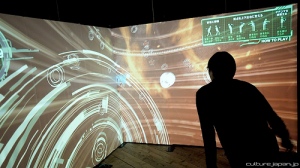The Kinect sensors include a RGB camera, a depth sensor, and a microphone -- all meaning that the physical actions taken by gamers can be captured by the Kinect and used in turn to control simulations. "You are the controller," as some of the early marketing for the device contends.
But it isn't just this gesture-based computing that makes the Kinect interesting for educational applications. It's the fact that the Kinect software was quickly hacked and that now Microsoft has released a software development kit (SDK) so that users can hack away, but with permission and even guidance -- a big draw for both hobbyists and student hackers.
These user-created hacks are, quite frankly, a lot more impressive than some of the original games that came with the Kinect.
At the ISTE 2011 conference, Bryan Baker, a computer science teacher at Allen High School in Allen, Texas, gave a presentation on how to use Kinect and the XNA Game Studio as a way of teaching high-school-level computer science students programming and game design.
"I want to light a fire for you and your kids," said Baker in his presentation, "because this is really cool stuff."
It is, indeed, because SDK for Kinect helps put game development in the hands of students. It's all free, save the cost of the Kinect device itself. The official SDK allows .NET developers to write apps in C++, C# or Visual Basic. Some of the unofficial hacks do open Kinect development to other programming languages, but as these are unofficial, they do raise some questions about how teachers handle official and unofficial "hacking."
Nonetheless, the potentials for Kinect are still exciting, and as teachers will have the summer months to play with the official SDK, I predict we see more Kinect development occur in computer science classes in the fall. Indeed, as Baker exclaimed with delight, "Some day, this device is going to take attendance for us!"


